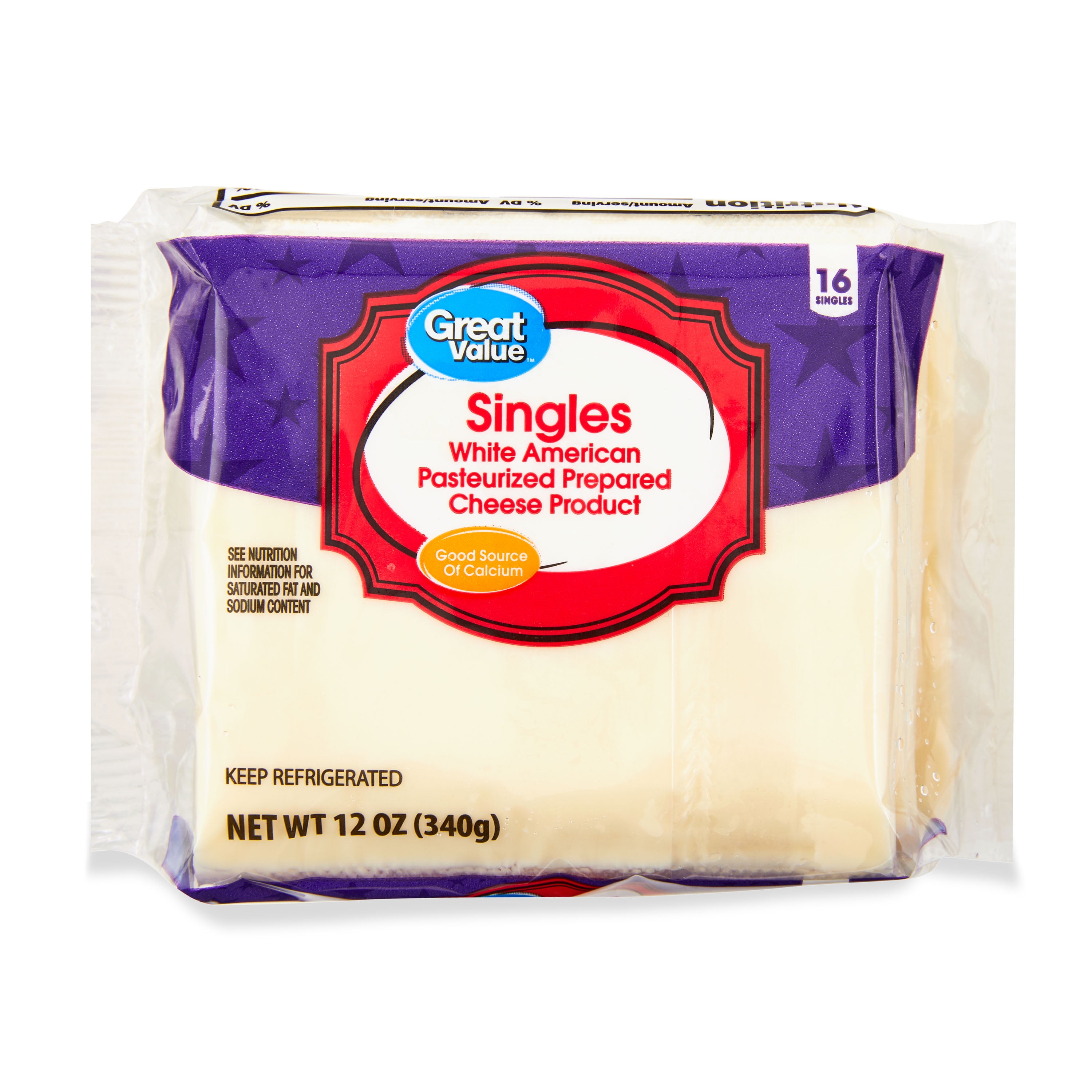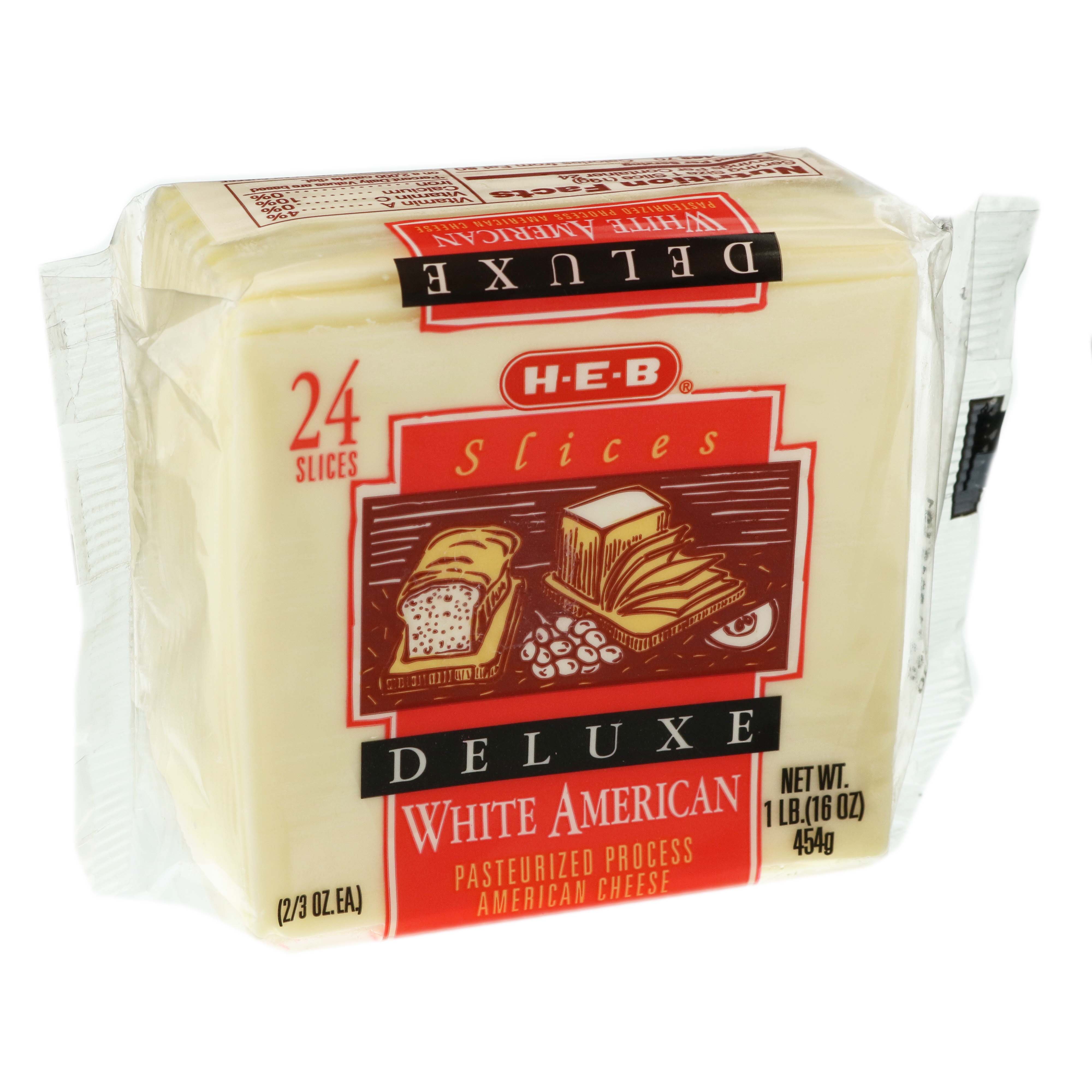White Vs. Yellow American Cheese: Taste, Uses, & More
What transforms a simple sandwich into a symphony of flavor and a cheeseburger into an iconic American experience? The answer, in its creamy, melty glory, is white American cheese, a culinary cornerstone that deserves a closer look. This seemingly simple ingredient, often overlooked, holds a fascinating history and a surprising versatility that makes it a staple in kitchens across the United States and beyond.
White American cheese, a processed cheese product, has a long and storied past, evolving from the innovative experiments of early American cheesemakers. Their goal was to create a cheese that not only complemented the local climate and ingredients but also offered a unique and satisfying culinary experience. Today, it stands as a testament to that pioneering spirit, offering a smooth texture and a mild flavor that makes it a perfect addition to various dishes. Its adaptability is such that it's just as comfortable gracing a simple grilled cheese sandwich as it is melting atop a gourmet burger.
White American Cheese
American cheese, in its various forms, including the beloved white variety, is a testament to the ingenuity of food processing. The process, developed in the early 20th century, transformed the cheese landscape, offering a product that was shelf-stable, easily meltable, and incredibly versatile. But what exactly is white American cheese, and what sets it apart from its yellow and orange counterparts?
The heart of white American cheese lies in its blend of natural cheeses, most commonly cheddar, Colby, and Monterey Jack. These cheeses are carefully selected and combined to achieve the perfect balance of flavor and texture. The key to its signature meltability lies in the addition of emulsifying salts, typically sodium citrate. This component allows the cheese to melt smoothly without separating, a characteristic that makes it ideal for dishes where a creamy consistency is desired.
| Attribute | Details |
|---|---|
| Name | White American Cheese |
| Type | Processed Cheese |
| Origin | United States |
| Flavor | Mild |
| Texture | Smooth, Creamy |
| Ingredients | Cheddar, Colby, Monterey Jack (natural cheeses), Sodium Citrate, other emulsifiers |
| Color | White (No Annatto) |
| Common Uses | Grilled Cheese, Sandwiches, Cheeseburgers, Mac and Cheese, Quesadillas |
| Meltability | Excellent |
| Shelf Life | Moderate (varies by brand and storage) |
| Notable Brands | Boar's Head, Cooper Sharp |
| Key Characteristics | Mild flavor, creamy texture, melts easily. |
| Reference | Cheese.com |
The absence of annatto, a natural coloring agent extracted from the seeds of the achiote tree, is what distinguishes white American cheese from its yellow counterpart. Annatto is frequently added to yellow American cheese to give it its characteristic orange hue. The white variety, however, retains its natural color, making it a visually appealing choice for dishes where the cheese's color is less important or where a more neutral palette is desired.
While both white and yellow American cheeses share the same fundamental production process, it's the subtle differences that cater to distinct culinary applications. This distinction allows cooks to choose the perfect cheese to complement their dish, ensuring the desired presentation and flavor profile.
White American Cheese vs. Yellow American Cheese
The world of processed cheese can be a bit bewildering. Both white and yellow American cheeses share a lineage, but their differences are important when considering a specific dish. The choice often boils down to the aesthetic aspect and the overall flavor profile you seek to achieve.
As previously noted, the primary difference lies in the inclusion of annatto in yellow American cheese. Annatto, a natural food coloring derived from the achiote tree, imparts a vibrant orange hue. White American cheese, on the other hand, has no added coloring and maintains the natural white color of the cheese blend. However, the actual flavour difference between the two is negligible; it mostly depends on personal preference and how it is integrated into the finished recipe.
| Feature | White American Cheese | Yellow American Cheese |
|---|---|---|
| Color | White | Yellow/Orange |
| Coloring Agent | None | Annatto (typically) |
| Flavor Profile | Mild | Mild (slight variation possible depending on the brand) |
| Common Uses | Grilled Cheese, Sandwiches, Dishes where color isn't a factor | Cheeseburgers, Nachos, Dishes where color is important |
| Appearance | Creamy white slices or blocks | Vibrant yellow/orange slices or blocks |
| Availability | Widely available in deli counters and grocery stores. | Widely available, often more readily accessible than white. |
| Nutritional Value | Similar (calories, fat, protein will be comparable) | Similar (calories, fat, protein will be comparable) |
White American cheese often shines in applications where the final dish's color is secondary. Think of a classic grilled cheese sandwich. The smooth, creamy, and consistent melt of the white cheese is a dream, perfectly melding with the bread. In deli sandwiches, it provides a pleasant backdrop, not competing with other ingredients.
On the other hand, yellow American cheese is often favored for visual appeal. Cheeseburgers and nachos are perfect examples. The yellow cheese adds a visual element that is instantly recognizable and enhances the perceived appeal. However, the flavor distinction is subtle, allowing for interchangeable use in many instances.
Delving Deeper
The processed cheese landscape is populated with various options, each designed to meet diverse culinary needs. One of the most common points of comparison is between white American cheese and white cheddar. While both can be used in similar ways, they offer distinct flavor profiles and are best used in specific contexts.
White cheddar is a natural cheese, made from the curd of cow's milk and aged to develop its distinctive flavor. The aging process can last from a few months to several years, resulting in a variety of textures and intensities, ranging from mild to sharp. The flavor of white cheddar is typically tangy and slightly salty, with a texture that can range from creamy to crumbly. The production of white cheddar does not involve the use of any coloring agents, hence the white color.
Compared to white American cheese, white cheddar delivers a more complex and bold flavour profile. While white American cheese boasts a mild flavour profile, white cheddar packs a punch, offering a sharp tang that many people adore. Also, their texture profile varies. White cheddar is generally a natural cheese, with a firmer texture which can change based on the aging process. White American cheese has a smooth, creamy texture. Thus, white cheddar would be an excellent choice for cheese platters, where its sharp, tangy flavours are appreciated. White American cheese is best when a consistently smooth, meltable cheese is needed.
| Feature | White American Cheese | White Cheddar |
|---|---|---|
| Type | Processed Cheese | Natural Cheese |
| Flavor | Mild | Tangy, Sharp |
| Texture | Smooth, Creamy | Varies: Creamy to Crumbly |
| Production | Blending natural cheeses, adding emulsifiers | Made from cow's milk, aged |
| Meltability | Excellent | Good, but can separate |
| Common Uses | Grilled Cheese, Sandwiches, Mac and Cheese | Cheese platters, sandwiches, sharp flavor profiles |
| Shelf Life | Moderate | Varies with aging |
Mastering White American Cheese
White American cheese's versatility stems not just from its mild flavor and creamy texture, but also from its ease of use and adaptability. It's a kitchen ingredient that is both user-friendly and forgiving, making it perfect for beginner cooks and seasoned chefs alike.
To ensure that white American cheese maintains its quality and stays fresh, proper storage is crucial. The cheese should be tightly wrapped in plastic wrap or placed in an airtight container and stored in the refrigerator. It's best to use the cheese within a couple of weeks of opening for optimal flavor and texture. However, its long shelf life makes it convenient and economical.
The uses for white American cheese are seemingly limitless. Its smooth melting properties make it a standout performer in grilled cheese sandwiches, melting quickly and evenly to envelop the bread and create a gooey filling. In omelets and scrambled eggs, it melts beautifully, creating a breakfast that is satisfying and a sure-fire crowd-pleaser. It adds a familiar comfort to the ever-popular mac and cheese, blending smoothly into the sauce to provide a signature creamy mouthfeel. This cheese can also be used in deli sandwiches, where it provides a neutral backdrop that won't overpower the other ingredients. It also works well in quesadillas, imparting a mild flavor, perfect for balancing the spice from other ingredients.
One of the benefits of white American cheese is its adaptability. It makes for an excellent substitute for yellow American cheese, particularly in recipes where the color is inconsequential. It is also suitable for substituting other cheeses, like provolone or Monterey Jack, depending on the desired outcome. However, bear in mind that substituting can influence the flavor, but the resulting taste might be just as satisfying.
When substituting white American cheese, it's important to think about the desired texture. If a melted, creamy result is required, white American cheese is an excellent choice. If a sharper, more distinctive flavour is preferred, other cheeses, like cheddar, might be better choices.
White American Cheese
White American cheeses role in the culinary world is far from simply a processed cheese. In fact, it's a kitchen hero, capable of elevating numerous dishes. Its mild flavour, smooth texture, and excellent meltability make it a star ingredient, whether in the most basic grilled cheese or in more complex creations.
This cheese's versatility is a testament to its adaptability, its ability to fit seamlessly into a wide variety of recipes. It's the ideal choice when cheese color is not a primary concern, offering creamy goodness in every bite. Its widespread availability and ease of use make it a favorite choice for families and experienced chefs alike.
From its humble beginnings to its present-day status as a culinary essential, white American cheese is a testament to ingenuity and its place in American cuisine. Its legacy is one of simplicity and versatility, showing how a simple cheese product can continue to provide a delightful culinary experience. Whether you are a passionate cheese lover or just someone who likes a good meal, white American cheese deserves a spot in your kitchen.


